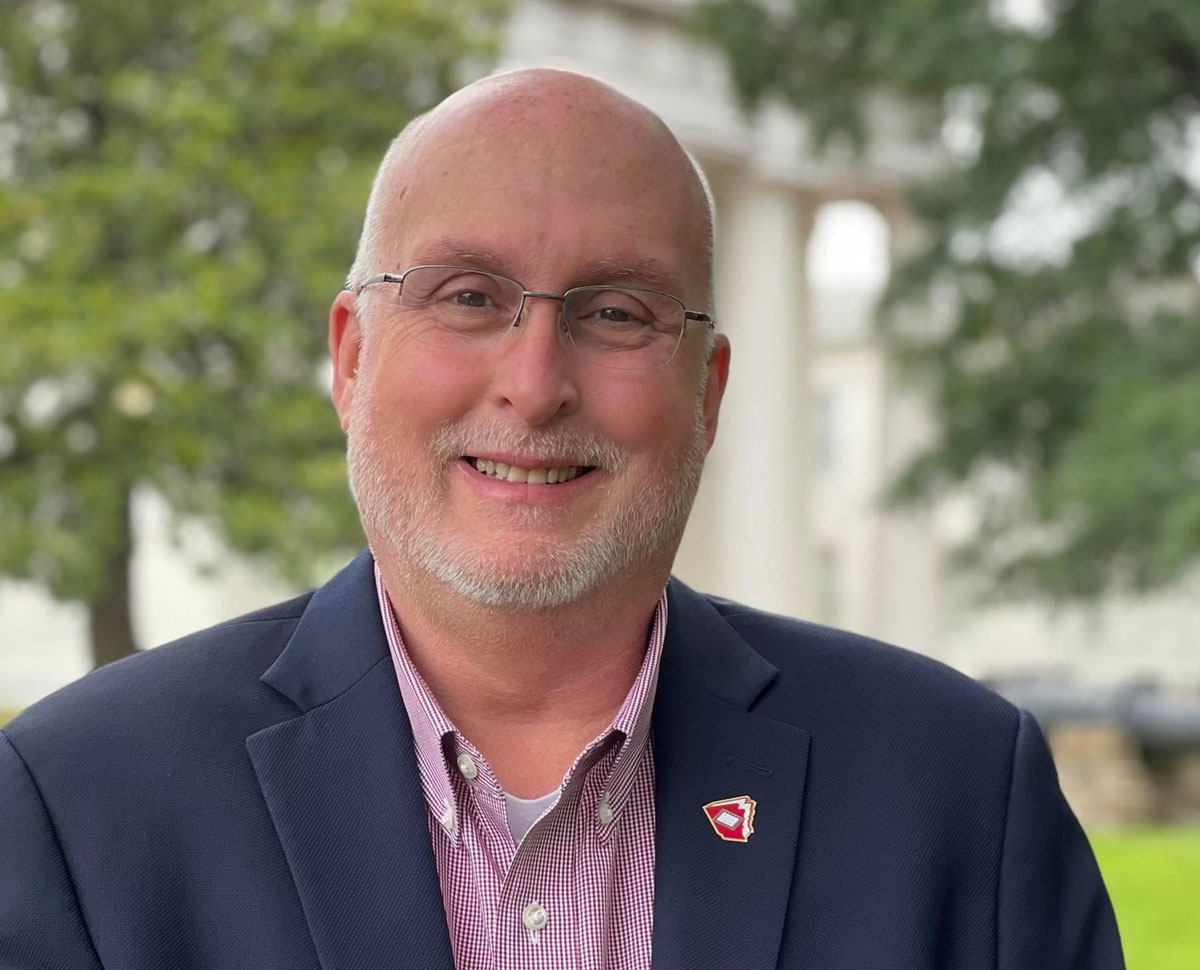Experienced Historian is Gaining Valuable Knowledge at UA Little Rock

An experienced historian with more than four decades of knowledge is continuing to expand his expertise by earning a master’s degree in public history at UA Little Rock.
Graduating this semester, Dr. Revis Edmonds Jr. states that the new knowledge he’s gained in public history will be an advantage in his career in the Arkansas Department of Parks, Heritage, and Tourism, where he serves as department research historian, federal and state programs historian for the Arkansas Historic Preservation Program, and project historian for the Governor’s Cabinet Project.
Edmonds has a long career with history, first earning a bachelor’s degree in history in 1987 and working as a history instructor for decades in high schools, colleges, and the Arkansas Governor’s School before joining the Arkansas Department of Parks, Heritage, and Tourism.
Edmonds said his love of history grew from the political relationships that shaped his hometown of Hope, Arkansas, which is the hometown of former President Bill Clinton and former Gov. Mike Huckabee.
“This always comes back to Arkansas’s political history and heritage taking its roots in the town where I was raised, which at one time was the most famous small town on Earth,” he said. “Arkansas politics, as far as its culture was concerned, was life in my small town writ large.”
While at UA Little Rock, Edmonds was a part of a group of historians who won the Gingles Award from the Arkansas Historical Association for their exploration of the criminal case of two African American Arkansans who were executed for the alleged rape of a white woman in the 1930s. The award is presented to the authors of the best manuscript article on any Arkansas history topic.
The article, “From Lynching to Legal Lynching, Mob Justice to Courtroom Justice: The Arkansas ‘Scottsboro’ Cases of James X. Caruthers and Clear ‘Bubbles’ Clayton, 1935-1939,” will be published in the Arkansas Historical Quarterly. The paper examines the criminal cases of James X. Caruthers and Clear “Bubbles” Clayton, two African American farm laborers who were convicted of the rape of a white woman, Virgie Terry, and executed in 1939.
In Edmonds’ thesis, “The Arkansas Governor’s Cabinet Project: A Study of the Evolution of the Executive Branch,” he examines the development of the executive branch in Arkansas and the cultural and political limits that led to its transition into a modern governing system. He also explores how former Arkansas Govs. Ben Laney, Dale Bumpers, and Asa Hutchinson streamlined the executive government through the Revenue Stabilization Act, Act 38 of 1971, and the Transformation and Efficiencies Act of 2019.
Edmonds’ thesis grew from a work project where Arkansas Department of Parks, Heritage, and Tourism Secretary Stacy Hurst asked him to create biographies of the 15 original cabinet secretaries under the Transformation and Efficiencies Act of 2019. The project has grown into a comprehensive study of executive branch reorganization in Arkansas going all the way back to Reconstruction.
“I’m happy that I was able to use a work project like this to expand the body of knowledge in this area,” Edmonds said. “There has been a lot of work done by political scientists concerning the legislatures of the governor’s office, but nothing on how the organization of the executive branch has evolved over more than 150 years in Arkansas.”
This degree is actually Edmonds’ third master’s degree, and he’s not yet finished with his education. He has plans to start a fourth master’s degree in public administration next year, citing the knowledge will help him as his career continues to expand further into historic preservation across the state.
His advice for new history students is to find something you’re interested in and run with it.
“If you’re not focused on what you love, then you are just going through the motions,” Edmonds said. “You are not adding to scholarly material either, which also should be a part of the mission of any history student.”
